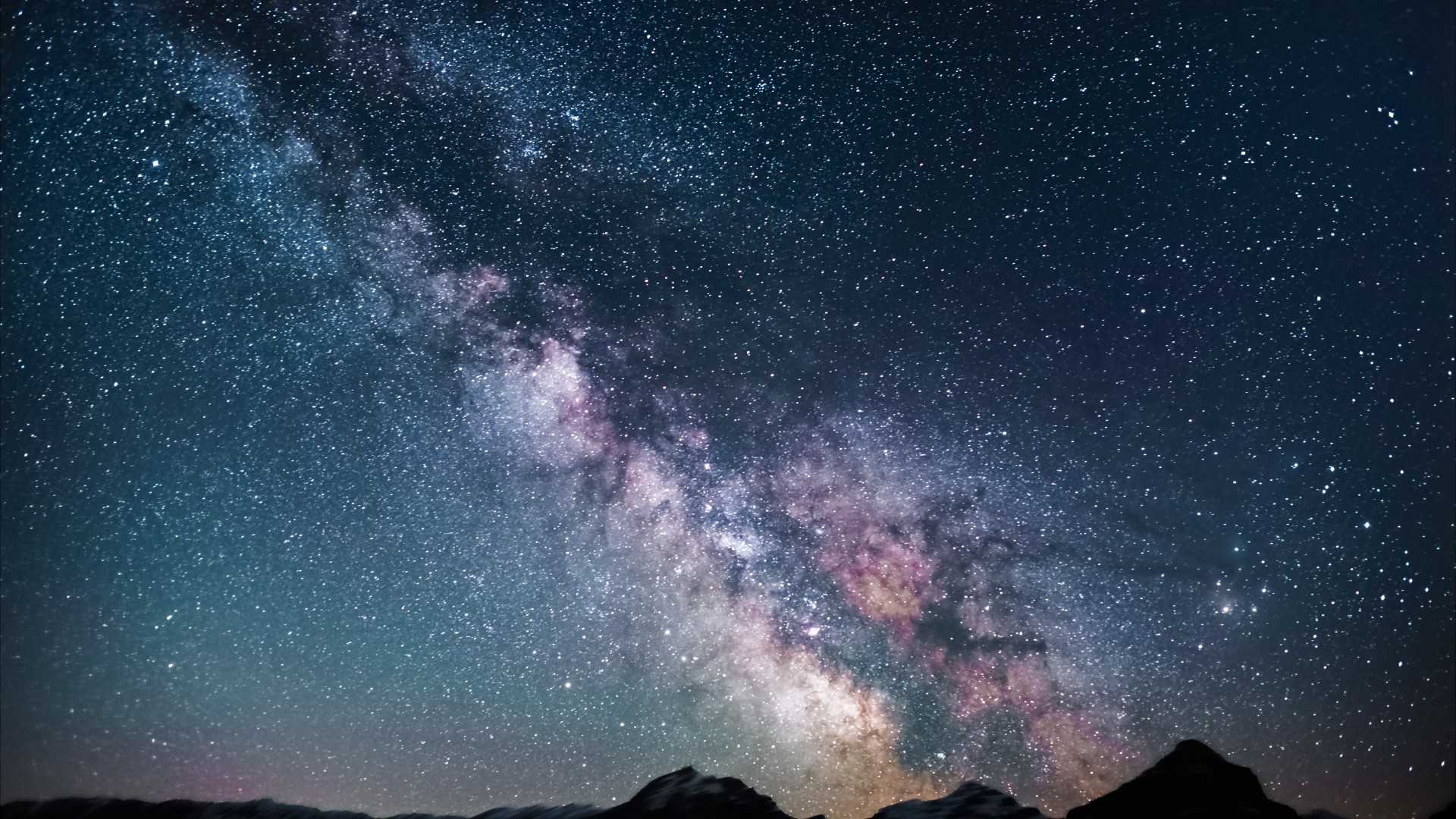When you look up into the midnight sky do you see stars? Or are the lights in the heavens mere appearances, images created in transit? The answer settles the question of whether the creation of the universe was recent or ancient.
One fact has continued to hold my attention in the ongoing debate between creationists on the age of the universe. I can see stars. On a clear night I see thousands of them. Astronomers seem to know a lot about these twinkling specks of light in the heavens, even though they are very far away.
This observation prompts a simple question for those who believe the universe is relatively young—thousands of years old and not billions. Do stars exist? Are these astronomers measuring characteristics of actual heavenly bodies when they apply their discipline?
“Of course stars exist,” is the reply. “We can see them.” But this raises a problem for the young-earth view. The existence of stars the way we see them is evidence for an old earth, not a young one. If some stars are millions of light years away, then their light must have traveled for millions of years for us to see it, making the recent-creation view impossible.
Appearance of Age
This point has not been lost on young-earthers, who offer a standard response. Genesis indicates that when God created Adam and Eve they appeared as adults. In the same way, God created the universe with the appearance of age. Light from stars millions of light years away from the earth was created in transit. Observers on earth (Adam and Eve) could see the star instantly, in spite of the great distances, in spite of the fact that the universe was only days old.
This tidy rejoinder seems so sensible at first glance it’s easy to be mislead by it. It’s irresistible to those Christians who have a weakness for snappy explanations that save the paradigm. Such answers may fend off attack for the moment, but often do not have the backbone to survive closer scrutiny. This one does not.
First, this comeback is a tacit admission that the universe does, in fact, appear old. This concedes a tremendous amount of ground, weakening the young-earther’s case considerably. Isn’t it safer to draw conclusions on the way things actually look rather than suggest some divine sleight of hand?
Second, it’s not clear that the observation is even accurate. There is a difference between the appearance of maturity and the appearance of age. True, Adam and Eve were created as adults. There’s no evidence, though, that they appeared old—that is, aged.
When something appears aged, there is evidence that the passage of time has left its mark. There may be calluses on the hands, wrinkling of the skin due to sun exposure, or plaque build-up in the circulatory system. These are bona fide signs of age. Simply being physically mature is not the same as aging.
Starlight actually shows signs of age. The distance it needs to travel to be visible on earth requires the passage of massive amounts of time. Starlight is not mature; it is old.
Third, even if the account suggests Adam was created with the appearance of age, where in the text do we get the idea that the entire universe was created like that? There was a practical necessity for creating the first humans as adults. They had to accomplish adult tasks right from the outset. What practical necessity required God to instantly create other features of the world with the appearance of age?
Why the “appearance” of millions of years of erosion on the moon? Why the deep canyons half way around the world from Eden that “appear” to have been slowly carved out of solid rock by running water? Why do the walls of these canyons reveal earth that “appears” to have been laid down one millimeter at a time by ancient accretions of atmospheric dust?
“God’s ways are not our ways,” they reply. True enough, but that only applies when we know how God has acted but don’t understand why. Without an explicit statement from the text that the entire universe actually was created with the appearance of age, and lacking good reason why God might do so, we have no justification for assuming He did. The case gets weaker and weaker as the layers of speculation mount.
These are serious problems for the God-created-the-light-in-transit theory. The view, however, faces a far more formidable challenge.
A City on a Hill
It is tempting to think of starlight simply as a generalized glow, like the steady luminescence of a light bulb. If we think of a star as a massive light bulb in space, it’s easy to imagine how God would have no trouble creating the undifferentiated glow in transit. Starlight, though, is not just a glow, but a record of turbulent events that, on this view, never actually took place.
Imagine a hiker, traveling at night through a dark and desolate countryside toward a glow on the horizon. Rounding a bend in the trail, he discovers that the radiance comes from a city in the distance. From afar the light is ill-defined, but as he gets closer the glow of the city reveals itself as a composite collection of thousands of detailed activities. A lot is going on, even though from a distance all is generalized into a steady glow.
He could have discovered this from a long way off if he had the right instruments—a powerful telescope, for example. Looking with the naked eye the hiker sees only radiance, but with magnification he could have seen the small pieces of life in the city that made up the whole.
Here is the important point. The distant light of a city is not undifferentiated luminosity with a life of its own. It is a composite whole made up of many parts, the events of life in the city. Take away the events and the light vanishes.1
If our traveler paused in the distance to ponder the glow on the horizon and concluded it was light created in transit giving the mere “appearance” of a city, then all of the smaller particulars that made up the composite glow (details visible to him through a telescope, even at a distance) would be mere “appearances” also, illusions. All of the particular circumstances of life in that city never really happened. They were just part of a light show.
If starlight was created in transit, then the details astronomers see through the telescope never really took place. On this view the whole universe would be, as one author quipped, a cosmic film-set.2 Stars may be there, but we can’t see them now and probably never will. They’re too far away to actually be viewed for millions of years, some for billions.
This confronts us with an odd dilemma: The real heavenly bodies that do exist will never be seen,3 and the stars we think we see don’t actually exist.
Supernova as Super Illusion
In 1054, Medieval stargazers witnessed a burst of light in the constellation Taurus that shone with the light of a million suns. They had witnessed a supernova, an exploding star hurtling debris into space leaving the Crab Nebula as its remnant. Three other such events have been optically observed in recorded history (1006, 1572, and 1604), and the remains of 120 supernovas have been detected by astronomers.4
Here is my question: Have supernovas ever happened? If the young-earth explanation for the apparent age of the universe is true, then the answer is no. There have never been any supernovas. Such an explosion close enough to be actually witnessed by us during human history (within, say, 10,000 light years) would have obliterated life on our planet. All those that appear further away merely represent light created in transit and not the supernova itself.
On this view, the Crab Nebula currently exists—presumably5—but the star that medieval astronomers thought they saw explode to create the nebula never did. It looks like a star exploded a billion years ago, but nothing existed a billion years ago. The universe is young, not old. Appearances to the contrary, all supernovas have been fictions, mere heavenly light shows fabricated by God.
What Is Truth?
This view breeds skepticism not limited to supernovas. If all we see now in the heavens are images created in transit, how do we know any distant heavenly bodies exist at all? If God needed them only “for signs, and for seasons, and for days and years,”6 mere images work just fine.
This view undermines all observational disciplines, including science and history. What else do we think exists that doesn’t? What else in the world is an illusion created by God? What is real and what isn’t?
We can’t appeal to the Bible to rescue us from our skepticism for three reasons. First, the Scripture seems to say that God created actual heavenly bodies. “Now look toward the heavens, and count the stars, if you are able,” God tells Abraham.7 He doesn’t say count the light images.
Second, the words on the pages of my Bible are conveyed to my mind in the same way starlight is—through light. Why should I trust what I see looking down at the page when I can’t trust what I see looking up at the sky?
Third, the entire notion of the Bible as a source of truth is undermined. The standard definition of truth entails correspondence. A statement is true if it corresponds to reality, that is, if it describes things as they really are. The biblical claim that Jesus is the Messiah is true only if Jesus actually is the promised One. The resurrection is true only if Jesus actually rose from the dead. The statements correspond to true conditions in the objective world. When someone knowingly makes a statement that does not correspond to actual circumstances we say he lied.
If the Scripture unambiguously states we see stars in the heavens8 and we don’t, then the Bible’s claim does not correspond to reality. It is false, and the Bible has deceived us. We don’t see stars, only fabricated lights. Our ultimate source of truth has become unreliable. We are stuck with a Scripture that is only true “for me,” true for those who choose to believe it. It’s not true to what is really there.
How Long, Oh Lord?
The young-universe creationist is in an untenable spot. If the earth is six to ten thousand years old, then virtually nothing we see outside of our solar system is real. All observational astronomy of distant heavenly objects is a fiction. There were no supernova explosions billions of years ago. The only stars we behold are “shooting stars,” bits of intergalactic dust that burn up in our atmosphere.
God has fabricated images of events that never happened, but passes them off as if they did. The Bible deceives us. If distant stars are real, no human would know it for millions, even billions, of years. That which is seen doesn’t exist, and that which exists will never be seen.
On the other hand, if we see real stars when we look heavenward, and those stars are a billion light years away, then they must have existed a billion years ago.9 If our eyes and our instruments can be trusted, then the universe is ancient. When the Bible tells us to behold the stars, it speaks the truth.

